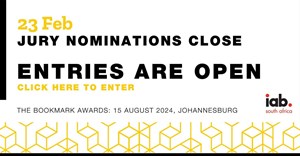
Subscribe & Follow
Jobs
- Advertising Specialist - Get It Magazine Durban Durban
- Advertising Sales Executive Sandton
- National Sales Manager - Radio Sales Johannesburg
- Senior Sales Executives Cape Town
- Independent Sales Agent Paarl
- Sales, Marketing and Financial Advisory Durban
- Advertising Sales Executive - Energize Illovo, Johannesburg
- Senior New Business Development Sales Executive Johannesburg, Cape Town
- Sales Consultant Nelspruit
- Sales Consultant Cape Town
Enable your account sales team with these steps

My view is that both actually need to be enabled for an organisation to be successful – salespeople need to have every possible sales tool at their disposal, and buyers need more information that allows them to make better buying decisions.
Here are seven ways to enable your B2B account sales team, drawn from our experience at Demographica:
Seven steps to enable your sales team
1. Research
Many organisations make the mistake of focusing only on the sale – they research the key accounts, who the decision-makers are, and what the favoured channels are. From there, they create tools to help salespeople sell. However, that’s no longer enough. It’s imperative to research how the buyers buy. A better understanding of the buyer, how they make decisions, what collateral they consume to better inform them and influence their decision, how they search for products and services they believe they need, and how proposals are generated and flow through the organisation towards approval are all concepts which need to be points of focus. Once the organisation has a well-rounded understanding from both perspectives, the sales team will be adequately enabled.
2. Strategy
A sales strategy should involve plans for what salespeople actually do, with a view for solving the sales team’s pain points. Do they need to be empowered with tools that help them present better? Do we enable them with appointment setters? These kinds of questions follow research and should form the backbone for decisions which enable the sales team. No strategy is the same - it’s different from industry to industry, because sales culture changes between organisations even if they have the same clients. The strategy needs to appropriately play the organisation and sales teams’ strengths.
3. Mapping
A deeper understanding of sales strategy and buyer behaviour allows the organisation to map out the touch-points both sides have in the process of purchase. Those two maps can then be overlaid to illustrate the common touch-points – which is where the sales enablement focus should be. In the places where the touch-points don’t overlap, marketing helps the sales team play a stronger role.
4. Asset Identification
The overlap in touch-points illustrates where engagement can happen. The decision now needs to be about what assets are needed to make a meaningful contribution to both sides of the purchase process. Essentially, assets need to be developed for both salespeople and buyers. The sales team may need internal assets that help them understand how to sell to specific customers, what the company positioning is, and how to deal with objections from potential buyers and how the solutions can enable buyers. The external assets are for buyer consumption so they can understand how the product or solution can benefit them. Ideas need to be presented from the two different perspectives to properly enable the salespeople.
5. Training
A majority of sales training is about how to sell better. Whatever the solution ends up being, the focus is on the ‘how’ of selling. Product training is the other side of the coin, with a pure focus on understanding the products and services being sold. There are organisations that are good at doing one or the other – but my argument is that merging these two types of training will deliver maximum benefit. Pursuing both training avenues educates salespeople in how to sell products and solutions in a way that the company wants and needs them to, in line with their culture, values and in a way that shows that they understand their customers.
6. Measurement
Now that the sales team is equipped with understanding, assets and training, they need to go out and sell. This performance needs to be measured. An organisation needs to decide on what the metrics are; are their sales teams getting more meetings? Are they building bigger pipelines? Have they previously been invited to deliver two proposals from 10 meetings, and are now delivering six? Once the metrics have been decided it’s easier for the organisation to measure whether the touch-points that have been mapped are being supported by the tools and training. From here they can be weighted, optimised or tweaked accordingly.
7. Implementation
An implementation roadmap is the final stage. What kills a sales team is being given 25 new assets at the end of this process and being told to make it work. The assets need to be rolled out strategically over time, as all the prior steps impact their weight and where they fit into the sales journey. Introducing new tools so late in the process can overwhelm salespeople when the point was to make their lives easier. The implementation plan is often coupled with a change management strategy which enables the entire organisation. A successful sales organisation, like SAP, Oracle, and Salesforce, have sales enablement built into the core of their sales model.




















